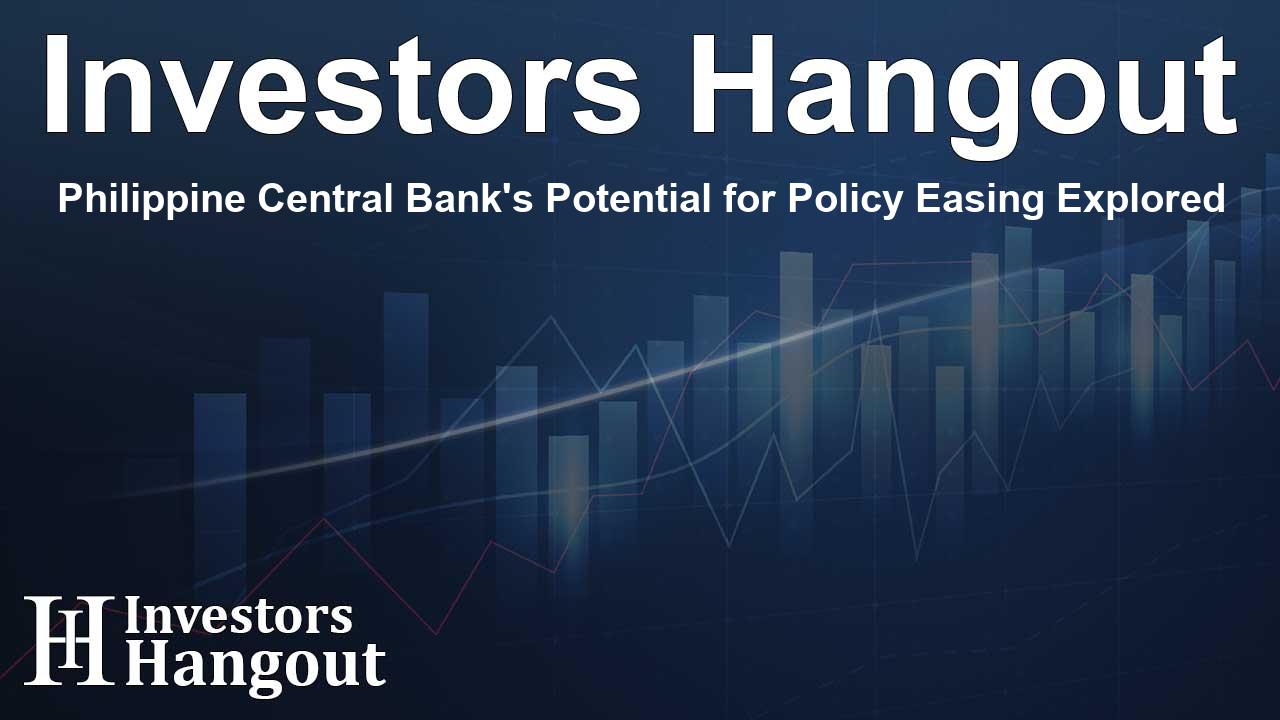Philippine Central Bank's Potential for Policy Easing Explored

Insights from the Philippine Central Bank Governor
The head of the Philippine central bank has indicated that there is potential for further easing of monetary policy, highlighting the country's current economic landscape.
Current Inflation Trends
Recently released data shows that annual inflation in the Philippines has remained within the target range of 2% to 4%, a significant achievement for the Banko Sentral ng Pilipinas (BSP).
Achieving Inflation Targets
This marks the first time since 2021 that the Philippines has successfully met its inflation objectives, despite a rise in consumer prices noted in the latest reports. In December, inflation increased to 2.9%, surpassing the forecasts of many economists.
Monetary Policy in the Face of Global Changes
Bangko Sentral ng Pilipinas Governor Eli Remolona shared these insights during a recent Rotary Club gathering. He pointed out ongoing uncertainties related to international trade, particularly those stemming from the policies of U.S. President-elect Donald Trump.
Impact of U.S. Trade Policies
Reports indicate that Trump's administration may consider declaring a national economic emergency, which could justify imposing broad tariffs on various nations. These actions could include a proposed 10% tariff on all global imports and an alarming 60% on goods from China.
Future Monetary Easing Considerations
Despite the potential inflationary pressures from these tariffs, Remolona emphasized that the BSP's policy trajectory is independent of Federal Reserve actions in the U.S. The BSP had previously reduced its key interest rate by 25 basis points to 5.75% in its December meeting, suggesting that any further adjustments this year would likely be gradual.
Monitoring Inflation Trends
Given the ongoing uncertainties, Remolona expressed that while there is still room for policy easing, decisions would be made carefully to address inflation concerns while supporting economic growth.
Frequently Asked Questions
What did the Philippine central bank governor say about monetary policy?
Governor Eli Remolona indicated there is room for further easing of monetary policy while emphasizing that the BSP's strategy isn't solely reliant on U.S. Fed actions.
How has inflation been in the Philippines recently?
Inflation in the Philippines has remained within the targeted range of 2% to 4%, with a notable rise to 2.9% in December.
What are the potential impacts of U.S. trade policies?
Trump's proposed tariffs could lead to inflationary pressures, influencing expectations around the Federal Reserve's monetary policy and potentially affecting the Philippine economy.
What steps has the BSP taken regarding interest rates?
The BSP cut its key interest rate by 25 basis points to 5.75% as part of its efforts to stimulate economic growth.
What will future policy adjustments look like?
Further easing of monetary policy is expected to happen in a cautious manner, described as 'baby steps', to manage inflation effectively.
About Investors Hangout
Investors Hangout is a leading online stock forum for financial discussion and learning, offering a wide range of free tools and resources. It draws in traders of all levels, who exchange market knowledge, investigate trading tactics, and keep an eye on industry developments in real time. Featuring financial articles, stock message boards, quotes, charts, company profiles, and live news updates. Through cooperative learning and a wealth of informational resources, it helps users from novices creating their first portfolios to experts honing their techniques. Join Investors Hangout today: https://investorshangout.com/
Disclaimer: The content of this article is solely for general informational purposes only; it does not represent legal, financial, or investment advice. Investors Hangout does not offer financial advice; the author is not a licensed financial advisor. Consult a qualified advisor before making any financial or investment decisions based on this article. The author's interpretation of publicly available data shapes the opinions presented here; as a result, they should not be taken as advice to purchase, sell, or hold any securities mentioned or any other investments. The author does not guarantee the accuracy, completeness, or timeliness of any material, providing it "as is." Information and market conditions may change; past performance is not indicative of future outcomes. If any of the material offered here is inaccurate, please contact us for corrections.